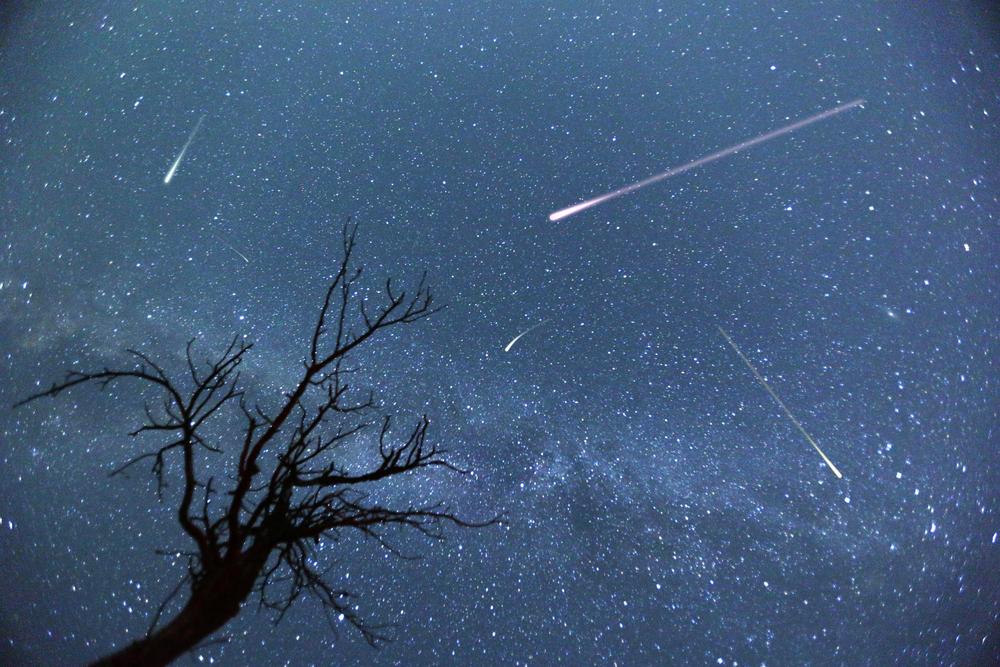
A dramatic natural lightshow is happening nightly at the moment, as the Perseid meteor shower sends a deluge of shooting stars racing across the roof of the northern hemisphere.
Named after the Perseus constellation (the direction from which it appears to shoot from), the phenomena is caused by debris from the tail of Comet Swift-Tuttle, which burn up as they enter Earth’s atmosphere.
The meteor shower happens each August, but this year’s show promises to be twice as big as normal, thanks to the current gravitational pull of Jupiter, and up to 80 meteors might be seen exploding each hour.
The best time to soak up views of the cosmic shower tonight and over the weekend is after the moon goes down, when the night sky darkens and the meteorites appear much brighter. Moonset tonight will take place in the UK at about 1am.
What's up for August? See five planets after sunset and the annual Perseid meteor shower https://t.co/BydlsM7zyIhttps://t.co/LatLT1U2ve
— Cassini (@CassiniSaturn) August 1, 2016
It’s all very pretty, but you should know that Comet Swift–Tuttle has also been described as ‘the single most dangerous object known to humanity’ because of how relatively close it skims to Earth during its orbit.
If it was to hit us, while travelling as it does at about 60 kilometres per second, the energy produced would be roughly 27 times greater than the Cretaceous-Palaeogene meteor impact that wiped out the dinosaurs. Although don’t go blowing your bank account, throwing sexual caution to the wind or losing too much sleep over this prospect just yet.
Scientists have calculated that the comet will pass within 22,900,000 kilometres (14,200,000 miles) of Earth on 5 August 2126, and miss us by a mere 22,000,000 kilometres (13,700,000 miles) on 24 August 2261. Another close flyby is due in 3044, but 15 September in the year 4479 is the date to really worry about. On that day, Swift–Tuttle will hoon past just 4,487,936 kilometres (2,788,674 miles) above Earthlings’ heads, with an impact probability of 0.0001%.
By then, however, our distant descendants could be mere minions to a much mightier alien race, because recently scientists have been watching another light-based phenomenon taking place far further out into space, that absolutely none of them can properly explain—at least not without admitting that it could be caused by a huge structure being built by an extraterrestrial civilisation.
Astronomers have been mystified by readings coming from a distant star called KIC 8462852 (known as Tabby’s Star to its friends) since the Kepler mission reported anomalous dips in the light it was emitting a year ago. Various explanations have been offered as to what might be causing this sustained blip, including the transit of a planet or a swarm of comets blocking the light, but all have been ruled out thus far. So what is causing the star to blink?

One theory claims that an alien megastructure, built by an unknown but clearly very advanced civilisation in order to capture the star’s energy, could be the answer to the enigma. Such a hypothetical structure is known as a Dyson Sphere, after the physicist and astronomer Freeman J. Dyson, who came up with the concept back in 1960.
No signs of intelligent life or artificial structures have yet been found, but neither have scientists been able to offer any other plausible explanation for the readings.
Keep watching those skies—anything could happen out there…
[geoip-content not_country=”CA”]
ON THE APP
Cosmic Journeys: Mysteries of a Dark Universe
Stare deep into the farthest reaches of space and uncover the greatest unsolved mysteries of the universe. When it comes to exploring the nature of the universe, the more answers we realise, the more questions we discover.
 Want to watch Mysteries of a Dark Universe for free right now? Subscribe to the Love Nature streaming app and start your 30-day free trial of the best on-demand natural history documentaries out there. [/geoip-content]
Want to watch Mysteries of a Dark Universe for free right now? Subscribe to the Love Nature streaming app and start your 30-day free trial of the best on-demand natural history documentaries out there. [/geoip-content]

